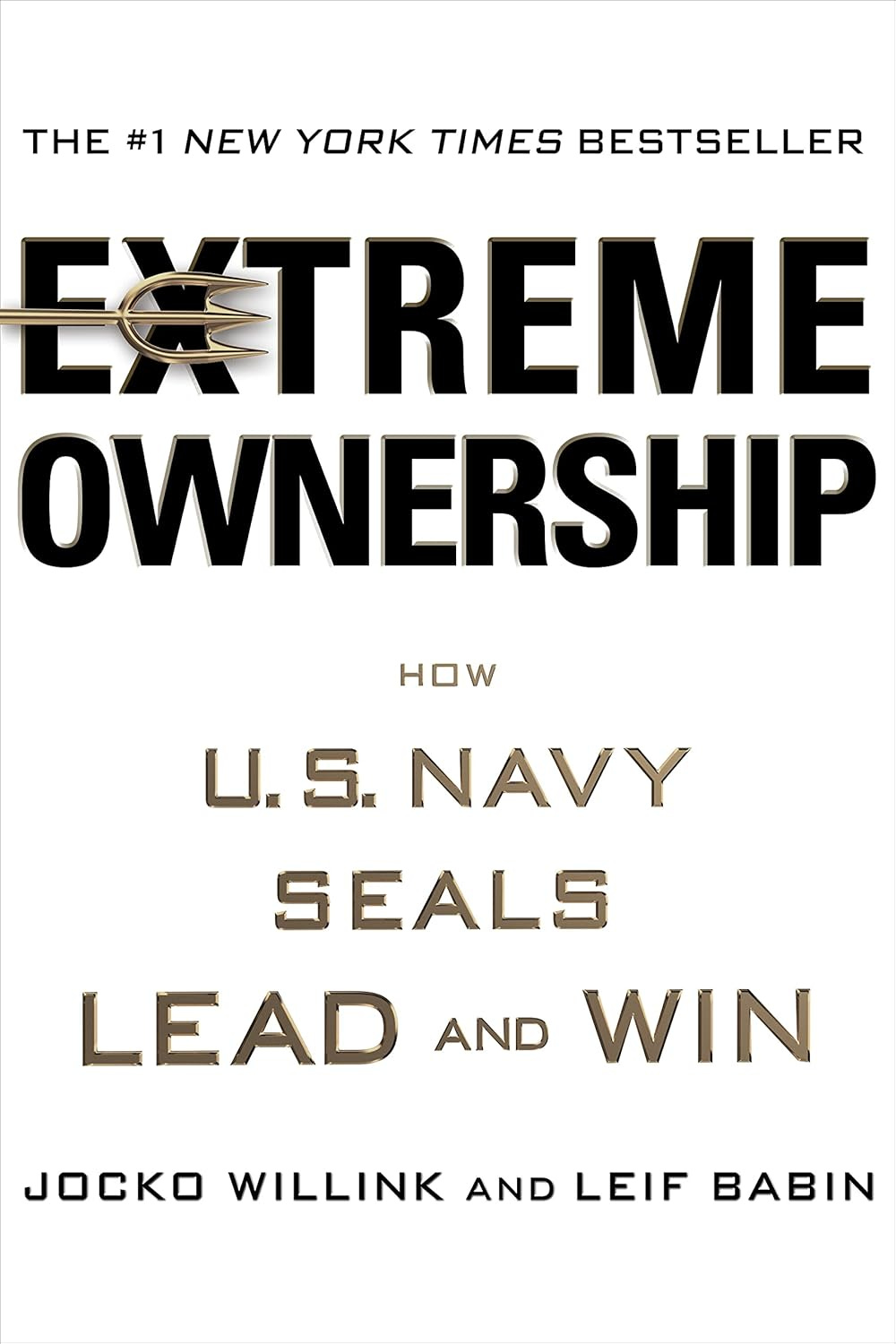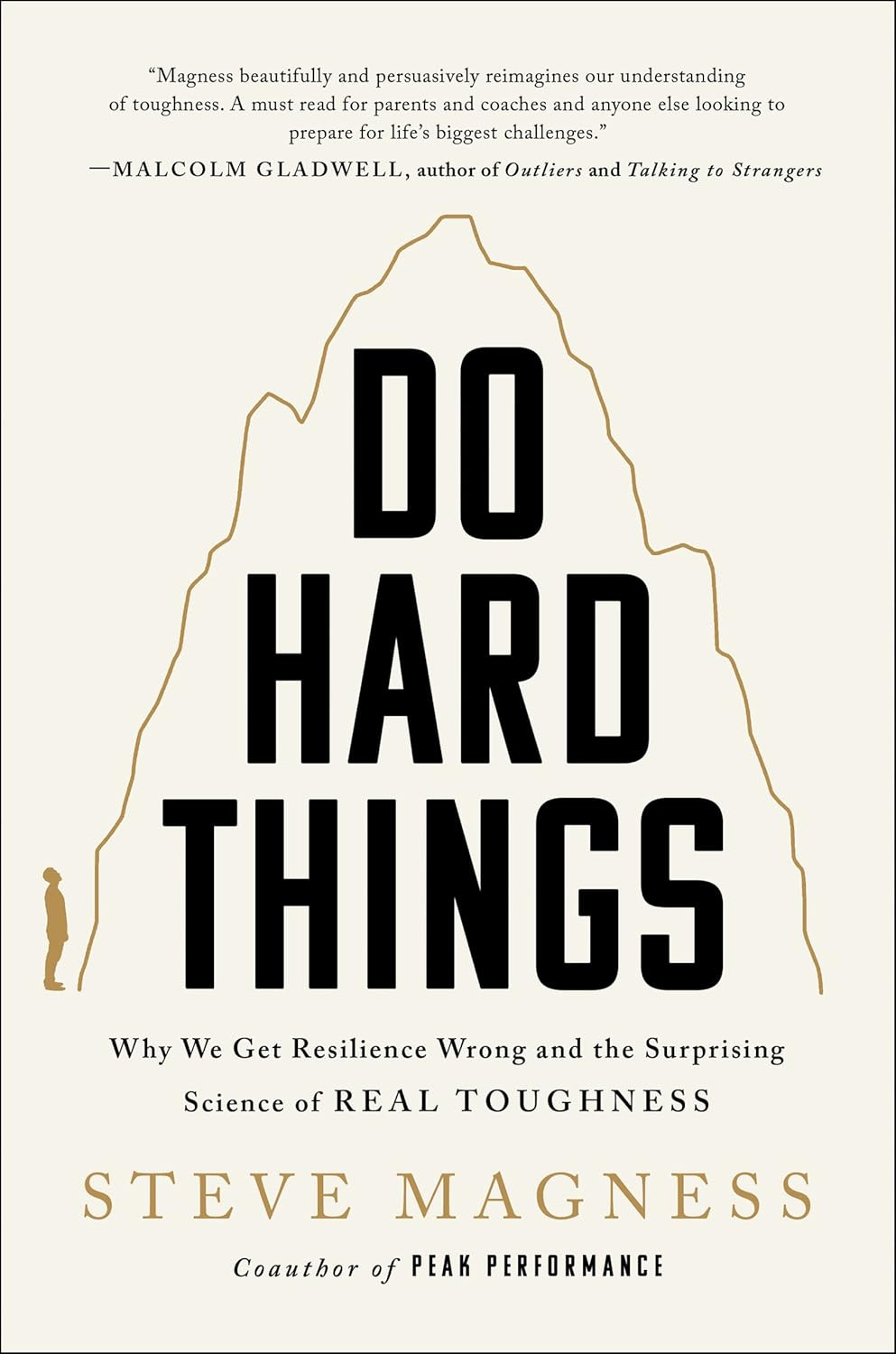Reading Roundup: February 2025
This month we read:
The Economic Weapon by Nicholas Mulder
Conflict: The Evolution of Warfare from 1945 to Gaza by David H. Petraeus and Andrew Roberts
Extreme Ownership by Jock Willink and Leif Babin
Samurai: A Very Short Introduction by Michael Wert
Do Hard Things by Steve Magnus
The Art Thief: A True Story of Love, Crime, and a Dangerous Obsession by Michael Finkel
The Economic Weapon by Nicholas Mulder
The Economic Weapon follows the genesis of economic sanctions as a substitute for traditional warfare from the early 1900s through the aftermath of WW II. The book is a great lesson in unintended consequences, second and third order effects, and is directly applicable to today’s global economy given the rise of populism, protectionism, and a budding trade war.
Countries first began dabbling with sanctions in a meaningful way by using blockades during World War I to choke supply routes and block key raw materials from entering Germany and Austria. By many estimates, the blockades caused over a half million civilian deaths in Austria due to starvation; far exceeding the civilian casualty toll from direct military action. The economic blockades likely played as big of a contributor in ending the war as the fighting on the front lines. From then on, countries began harnessing (for better or, often, worse) the power of economic sanctions.
Post World War I and throughout the 1920s the League of Nations attempted to use both positive (in the form of incentives and aid) and negative (sanctions/tariffs) economic enforcements to avoid war throughout Europe and Asia. It sometimes worked, such as in averting war in North Africa, but often times it only made things worse.
While sanctions certainly had the intended impact of crippling the economy of the target nations, they often served as a accelerant to armed conflict rather than a deterrent. As the League of Nations imposed sanctions on Germany and Italy in the 1930s, civilians were harmed the most which resulted in a populist uprising and civil unrest that undoubtedly contributed to the rise of Hitler and Mussolini. We all know what happened next with the most brutal global conflict in history unfolding in the years ahead.
The Economic Weapon is a great example of Buffett’s reminder that in economics, you can’t just look at the first-order consequences but always have to ask yourself “and then what?”.
Dan
Conflict: The Evolution of Warfare from 1945 to Gaza by David H. Petraeus and Andrew Roberts
I picked this book up because it promised to analyze the Russo-Ukrainian War within the context of the last 80 years of global warfare. It helped that it was written by Andrew Roberts, one of my favorite historian-authors, and David Petraeus, the former Director of the CIA and commander of the US-led coalitions in Iraq and Afghanistan.
Together they examine the world’s major conflicts since WW2, including: the Arab – Israeli wars, the Korean and Vietnam wars, the two Gulf wars, the Balkan wars in the former Yugoslavia, and both the Soviet and Coalition wars in Afghanistan, as well as guerrilla conflicts in Africa and South America.
The book delivered on its promise, but was a little more dense and detailed than I anticipated. Its target audience is likely a career bureaucrat or military officer working at the Pentagon. Investors and armchair historians will be most interested in the last chapter, which focuses on the implications for future warfare.
I’ll group my take-aways from the book into two. First, what are the common mistakes made during past conflicts? Second, what are the implications of the Russo-Ukrainian War and what do they say about future conflicts?
Some of the key mistakes made again and again were:
Underestimating the enemy.
Over estimating the value of a technologic advantage.
Failing to understand the enemy’s true motivations and willingness to fight.
Neglecting the political and cultural dimension of the war.
Poor coordination between military and civilian/political efforts.
One of the key mistakes made again and again was underestimating the enemy. The US thought its superior conventional forces (overwhelming firepower, advanced weapons, air superiority) would lead to a decisive victory in Vietnam, but this wasn’t the case. Something as simple (and predictable) as a dense jungle canopy three layers thick was enough to severely impair the effectiveness of many US weapons.
The US saw the war as a battle against communism while the Vietnamese saw it as a nationalist struggle to unify their country. The Vietnamese were willing to accept much bigger losses and a much longer conflict that the US expected.
Like the Americans in Vietnam, the Russians in Afghanistan tried to fight a conventional war against unconventional guerrilla forces. The Russians too misread the resolve of the Mujahideen and their willingness to accept losses. The Russians viewed the Mujahideen as simple rebels, but the Mujahideen saw themselves as defenders of their religion and ideology.
In Vietnam and Afghanistan both militaries underestimated the challenging terrain and their adversaries’ home turf advantage.
Investors can learn from these mistakes. When making an investment, it is key to understand the variant perspective – why is someone selling you the stock at a bargain price? It is easy to get excited about a company, especially a statistically cheap one, and rationalize that it is a simple market efficiency, that no one is doing the work like you are, and it is hiding in plain sight. A more humble approach is warranted. Mispricings absolutely exist, but it is key to know why, not merely to assume that you are smarter than the seller. That’s tantamount to the US assuming its helicopters would win a swift and decisive victory in Vietnam.
Another common mistake was neglecting the political and cultural aspects of the war and failing to coordinate the political and civilian effort alongside the military. The US achieved a military victory in Afghanistan and Iraq in the early 2000s yet failed to translate this into a favorable political outcome. The US failed to rebuild and empower the local institutions in those countries. The US underestimated the importance of local culture, tradition, and institutions, and they never became strong enough to exist without the US’s military support. The British also did this in Malaysia and the Russians in Afghanistan.
The lessons for investors is to understand the cultural implications of a turnaround. We often see activists enter a stock with a slick Excel model and seek fast changes to boost shareholder value. While the activist may be right, this is treating the symptoms and not the cause. The reason for poor returns and underperformance is usually rooted in culture. Culture is much harder to change and changes a lot slower than a balance sheet. For example, we’ve looked closely at the Advance Autoparts turn around, which has seen a revolving door of activists over the years. None have succeeded, which suggests that the problem is much deeper and rooted in culture. It looks simple on paper to remove the company’s redundant supply chains, but why wasn’t this done 10+ years ago? That speaks to a poorly performing culture or at least a much more difficult challenge than a spreadsheet implies.
Implications for the Russo-Ukrainian War and future conflicts.
The enduring importance of conventional forces.
The importance of rapid technologic innovation.
Asymmetric weapons (thousand dollar drones can sink billion-dollar ships).
Rapid technological innovation has been a hallmark of the Russo-Ukrainian war. Nevertheless, new technologies are no substitute for troops on the ground, superior artillery firepower, and strong supply lines. While drones and electronic warfare have become table stakes, the battlefield is eerily reminiscent of WW1 trench warfare, artillery duels and all. A military cannot rely on technological superiority alone. Old fashioned boots on the ground, maneuvering, strategy, and supply lines are still critical.
The militaries that adapt the fastest are often the ones who win. A technological advantage must be quickly exploited before it is copied and negated. Russia started the war with disastrous tactics but eventually learned from its mistakes and found a better way to fight. They are advancing slowly and at a huge cost, but they are advancing.
The war in Ukraine also demonstrates the nature of hybrid war. The war involves conventional forces, but also autonomous and semi-autonomous drones, electronic warfare (jamming), and cyber warfare. Information campaigns are easier to wage than ever before, and are happening far from the battlefield. The Russians are waging war every day on social and traditional media in the US and Europe.
Future conflicts will have all of these features, and they’ll only become more pronounced. As cheaply made weapons like drones become more powerful, they’ll be used by non-state actors to wage war. $7 billion aircraft carriers are still critical, but they’ll be weaker when non-state actors can attack and sink them with hundred thousand dollar submersible drones.
This reality has massive implications for the American defense industrial complex. Historically American defense contractors have earned above-average returns and operated as a duopoly. They are already facing increased competition from start-ups specializing in drones and electronic warfare. Upstarts may be unable to build a Virginia class sub, but they may be more agile and capable of building a drone that could hunt and sink one. The Pentagon would prefer more contractors and more competition, so this is a welcome development. Low cost, highly powerful weapons are here to stay, which means the Pentagon’s budget will broaden beyond conventional assets like tanks and ships. That may not benefit the existing miltary-industrial complex.
Matt
Extreme Ownership by Jock Willink and Leif Babin
Jocko Willink and Leif Babin are former Navy Seal officers who now run multiple businesses and consult with companies around the country about how to instill a culture of leadership and discipline. Jocko’s interviews are always inspiring and his consistency across everything he does is remarkable.
Jocko and Babin wrote this book as a window into how they advise clients to apply the lessons they’ve learned on the battlefield to business problems in the corporate world. As the title suggests, the theme that winds throughout the book is to take responsibility. When something goes wrong - in business or in your personal life - even if it isn’t your fault, it’s much easier to go through life just taking responsibility for everything.
A subordinate screwed up a project at work? Assume it’s your fault for not being clear enough about expectations or supporting them enough. An investment doesn’t go as planned? You should have done a better job assessing the downside or demanding a better margin of safety. Don’t look to blame others, just assume it’s your fault.
This attitude is actually incredibly freeing. Even though it’s clearly not this simple, if you just assume you are responsible for any outcome you’re involved in you’ll stop looking for excuses and make it much easier to actually improve. Even better, an attitude of extreme ownership is very contagious. When people see leaders at work or at home taking responsibility for outcomes, they will start to do the same thing. The collective results will then be improved dramatically with everyone focusing on themselves rather than trying to assign blame to extrinsic factors.
We try to get a feel for management teams tendency to take ownership when we are studying businesses. Do they constantly “adjust away” bad results, blame macro factors for under performance, or put a positive spin on everything? These are red flags that the company or management team is not demonstrating extreme ownership and it can be a major problem for the business.
Dan
Samurai: A Very Short Introduction by Michael Wert
I was fortunate to visit Japan this month and decided to learn about the country’s history while I was there. I am a big fan of the Very Short Introduction series, which has an expert write ~35,000 words introducing a topic. There are hundreds published and they’re perfect for gaining a broad overview of a topic.
Two numbers can tell you a lot about Japan: 150 and 126. 150 is the (approximate) number of years since the end of the Samurai period (i.e. the last Shogun). 126 is the number of generations that Japan’s current emperor can trace his lineage as emperor of Japan. Japan is unique because it was never colonized or conquered by an outside power. It has had various forms of government (Emperor, Shogun, Emperor, Democracy), but has never been ruled by outsiders. The Mongols tried and failed to attack in the 1300s, and the American occupation after WW2 only lasted a decade. The result is a unique culture built over thousands of years without significant outside influence.
We’ve all heard of the famously long-lived Japanese businesses. For example, Sumitomo dates to 1615 and Mitsui to 1673. Sudo Honke, a sake brewer, dates to 1141, and Gekkeikan, one of the largest sake brewers, dates to 1637. I thought they were relatively rare, but that’s not the case. Walking around Kyoto, you’ll see bakeries that have been running since the 1500s! Ichiwa, a Kyoto-based mochi shop, dates to 1000 and Toraya, a confectionery company, dates to the 1520s. These are old, even by European standards.
These companies were founded during the Samurai era but somehow survived the revival of the monarchy, WW2, the American occupation, and shift to democracy. It shows that a well run business with an in-demand product, like baked goods or sake, can adapt to even the largest societal changes.
I suspect a few reasons for their longevity, but cannot be sure. One, Japanese culture emphasizes craftsmanship. Compromise do not compromise on quality, and the Japanese consumer respects that. Second, Japanese culture emphasized familial duty, so sons and daughters dutifully taken charge of the family businesses as their parents age. Three, they produce consistently in-demand goods that are not subject to rapid technological change. And four, they (probably) had very conservative balance sheets which gave them a margin of safety to survive the lean years.
Thinking about this in the context of the current push to increase ROEs at Japanese firms, I wonder if that will come at the cost of future longevity. Berkshire could hold a lot less cash on its balance sheet if it wanted to and that would surely increase the company’s ROE and stock’s return. But it would come at the cost of durability. Buffett clearly prefers decent returns that can endure for decades, if not centuries. Wall Street traditionally prefers higher returns for short periods of time.
Matt
Do Hard Things by Steve Magnus
Steve Magness is one of the top long distance running coaches in the world. He is a former competitive distance runner and, given his background, one of the leading authorities on dealing with physical and mental discomfort. I find so many parallels between endurance sports and our style of investing. We emphasize duration of returns over maximization of returns during any given year, we try our best to block out short-term stresses, and we aim to keep chugging through obstacles for a long period of time. In other words we strive for consistency over intensity, a trade off which is also necessary in endurance sports.
Magness’ message throughout the book is about the misconception of what toughness is and how to achieve it. There is the traditional definition of toughness which can be thought of as blind grit. Ignore pain, bulldoze over or push through it at all costs. These tactics can work in the short run, but often they delay the inevitable and result in blowing up (personally or professionally).
Instead, Magness offers a different approach to building toughness, one that is more sustainable and practical, though no less easy. Here is what he has to say:
“Real toughness is experiencing discomfort or distress, leaning in, paying attention, and creating space to take thoughtful action. It’s navigating discomfort to make the best decision you can.”
He introduces this “toughness maxim” early in the book, and spends the rest of the time explaining various ways to achieve this outcome. For example, there is a chapter about decoupling the feeling of stress and the response to that stress. In other words, tough people don’t not feel stress, they feel the same stress as everyone else, they’ve just learned better ways to respond to it. For example, he offers the following advice when under duress:
Practice Having a Calm Conversation
Experience the sensations. Practice nonreactivity to them, interpreting them as information.
See where your thoughts try to go. Watch them arise and let the negative ones float away. Try to calmly respond with positive dialogue.
Feel the urge to quit or stop. Once you feel the urge to quit, try different strategies to navigate the urge. Sit with it, direct your attention toward or away from it, or utilize self-talk to work your way through it. The key is not fighting it.
Your Goal is to create space between feeling the sensations and jumping toward the urge to quit. You’re trying to decouple the feeling and the response.
Additionally, Magness suggests that discomfort is NOT something to be avoided at all costs. Rather, enduring and navigating discomfort is one of the three paths to happiness. In his view, which I agree with, the three ways to achieve happiness and satisfaction are doing/creating something meaningful, experiencing (art, nature, etc.) and suffering (as long as it’s for something worthwhile).
Perhaps the most important trait for achieving success as an investor is emotional control. It’s more important than being a smart business analyst in my opinion (which is still ungodly important). Building emotional equanimity is absolutely necessary to maintaining a sustainable investment approach and Magness’ tactics are a great starting place for those looking to improve.
Dan
The Art Thief: A True Story of Love, Crime, and a Dangerous Obsession by Michael Finkel
This was a short, fun vacation read for me. Stéphane Breitwieser was one of history’s most prolific art thieves. Between 1994 and 2002, Breitwieser executed over 200 heists across Europe, amassing a collection valued at approximately $2 billion. Unlike most art thieves, he was not motivated by money. He loved art and wanted to collect it. He never tried to sell any of his pieces. He displayed them for himself in his house.
The book focuses on Breitwieser's obsessive-compulsive tendencies and the psychological factors that drove his relentless pursuit of art. Once caught, Breitwieser promised never to steal again, but was quickly back at it. It was a compulsion. As he was caught again and again, the law came down on him harder and harder.
If there is a lesson for investors, it is that there is rarely just one cockroach in the kitchen. As Buffett says, it is hard to do a good deal with a bad person. The law was initially soft on Breitwieser because he was nonviolent. But it eventually became clear that the only way to stop him would be to lock him up for a long time. Investors who see shady behavior from insiders shouldn’t assume it is a one off. It may be part of a pattern of behavior that will repeat in the future. Culture is critical at a company and is what drives returns over the decades.
Matt
The Best Of The Rest
WSJ: What You Should Do About the Stock Market’s Giant Problem
Investors should worry about overvaluation, not over concentration.
The Magnificent Seven traded this week at an average of 43.3 times what analysts expect them to earn over the next 12 months.
WSJ: The Wild Economics Behind Ferrari’s Domination of the Luxury Car Market
Money isn’t enough to buy a top-of-the-range Ferrari. You need to be in a long-term relationship with the company.
Following an almost tenfold increase in the stock since its initial public offering almost a decade ago, Ferrari is now worth $90 billion, making it the most valuable car company in Europe—despite delivering just 13,752 vehicles last year. Volkswagen, which sold more than 9 million cars last year, has a market capitalization that is roughly $40 billion lower.
WSJ: UnitedHealth Under Investigation for Suspect Billing Practices
The WSJ’s analysis of billions of Medicare records showed that patients examined by UnitedHealth-employed doctors had huge increases in lucrative diagnoses after joining the company’s Medicare Advantage plans.
Bloomberg: Coal’s Four-Year Lows Hide a Coming Global Supply Squeeze
Thermal coal prices are at lows last seen in May 2021, before the energy-market upheaval that followed Russia’s invasion of Ukraine.
Investment in new production has dwindled in much of the world as shareholders and banks increasingly refuse to approve new spending on projects. Demand, however, continues to rise in India and China.
While supply has been constrained, demand has kept rising, as millions more homes are electrified, cars are charged and factories are built. Surging green energy is reducing the need for fossil fuels — but not enough. In India alone, coal demand is expected to climb to 1.5 billion tons by the year through March 2030, according to estimates by the coal ministry, an increase of about 3% every year.
Mr. Money Mustache: Wow, have you seen the stock market lately?
MMM compares the stock market to a rental property, an exercise we’ve done in the past.
The Brooklyn investor published several good articles after a long hiatus.
WSJ: The U.S. Economy Depends More Than Ever on Rich People
The top 10% of earners, buoyed by big gains in stocks, real estate and other assets, now account for 49.7% of all spending. Three decades ago, they accounted for about 36%.
Rolex is rumored to have paid CHF 5 billion for Bucherer, which was roughly the same size as Watches Of Switzerland (WOSG). WOSG however only has a GBP 1.4 billion market cap (and minimal debt).
“We’d rather buy at higher yields and wider spreads, and we may get a chance to do so . . . or not. But that preference in itself isn’t a reason for not increasing allocations to credit today.”
Foreign Affairs: The Troubled Energy Transition
The share of hydrocarbons in the global energy mix has hardly budged, going from 85% in 1990 to 80% today. What has been unfolding is not so much an “energy transition” as a “energy addition.”
Past energy transitions were also “energy additions,” with each adding to rather than eliminating prior energy sources. Throughout history no energy source, including traditional biomass of wood and waste, has declined globally in absolute terms over extended periods.
Barron’s: Cliff Asness on the Trump Market, Warren Buffett, Investing Mistakes—and Hockey
“Investors can have a momentum orientation at a value time horizon. Momentum seems to be quite powerful over three to 12 months. Value works over five years. A lot of investors look at that five-year horizon and go in the direction of what has worked. They are investing as momentum investors for a horizon where it is smarter to be a contrarian investor.”
“Don’t mistake a valuation change for truth.”
Do you have a “stranded” 401k from a past job that is neglected and unmanaged? These accounts are often an excellent fit for Eagle Point Capital’s long-term investment approach. Eagle Point manages separately manage accounts for retail investors. If you would like to invest with Eagle Point Capital or connect with us, please email info@eaglepointcap.com.
Disclosure: The author, Eagle Point Capital, or their affiliates may own the securities discussed. This blog is for informational purposes only. Nothing should be construed as investment advice. Please read our Terms and Conditions for further details.










